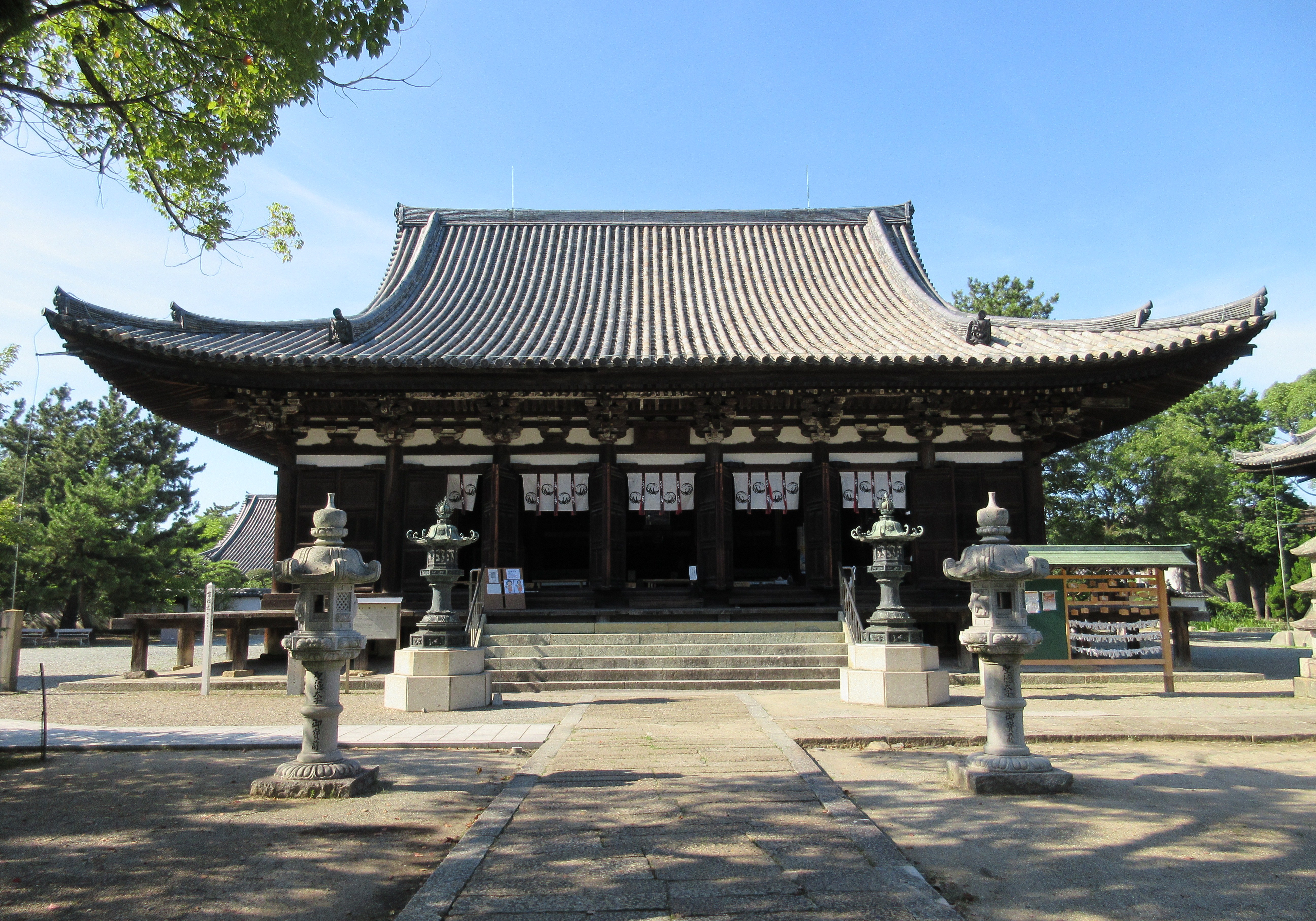Kakurin-ji on:
[Wikipedia]
[Google]
[Amazon]


 The is a temple of the
The is a temple of the
Official Site (Japanese)
6th-century establishments in Japan National Treasures of Japan Important Cultural Properties of Japan Tendai temples Buddhist temples in Hyōgo Prefecture Prince Shōtoku Religious buildings and structures completed in 589 {{Buddhist-temple-stub

Tendai
, also known as the Tendai Lotus School (天台法華宗 ''Tendai hokke shū,'' sometimes just "''hokke shū''") is a Mahāyāna Buddhist tradition (with significant esoteric elements) officially established in Japan in 806 by the Japanese m ...
sect in Kakogawa, Hyōgo, Japan
Japan ( ja, 日本, or , and formally , ''Nihonkoku'') is an island country in East Asia. It is situated in the northwest Pacific Ocean, and is bordered on the west by the Sea of Japan, while extending from the Sea of Okhotsk in the north ...
.
It was established by Prince Shōtoku
, also known as or , was a semi-legendary regent and a politician of the Asuka period in Japan who served under Empress Suiko. He was the son of Emperor Yōmei and his consort, Princess Anahobe no Hashihito, who was also Yōmei's younger half-s ...
's instruction in 589.
Kakurin-ji's Taishidō was completed in 1112, and Main Hall was finished in 1397. Both are National Treasures of Japan
Some of the National Treasures of Japan
A is the most precious of Japan's Tangible Cultural Properties, as determined and designated by the Agency for Cultural Affairs (a special body of the Ministry of Education, Culture, Sports, Scien ...
.
Building list
* Taishidō - National Treasure of Japan. It was built in 1112. * Main Hall - National Treasure of Japan. It was built in 1397. * Jōgyōdō - Important Cultural Property of Japan. It was built inHeian period
The is the last division of classical Japanese history, running from 794 to 1185. It followed the Nara period, beginning when the 50th emperor, Emperor Kanmu, moved the capital of Japan to Heian-kyō (modern Kyoto). means "peace" in Japanese. ...
.
* Gyōjadō - Important Cultural Property of Japan. It was built in 1406.
*Bell tower
A bell tower is a tower that contains one or more bells, or that is designed to hold bells even if it has none. Such a tower commonly serves as part of a Christian church, and will contain church bells, but there are also many secular bell tower ...
- Important Cultural Property of Japan. It was built in 1407.
* Gomadō - Important Cultural Property of Japan. It was built in 1563.
*Pagoda
A pagoda is an Asian tiered tower with multiple eaves common to Nepal, India, China, Japan, Korea, Myanmar, Vietnam, and other parts of Asia. Most pagodas were built to have a religious function, most often Buddhist but sometimes Taoist, ...
- It was built in Muromachi period
The is a division of Japanese history running from approximately 1336 to 1573. The period marks the governance of the Muromachi or Ashikaga shogunate (''Muromachi bakufu'' or ''Ashikaga bakufu''), which was officially established in 1338 by t ...
.
*Sanmon
A , also called , is the most important gate of a Japanese Zen Buddhist temple, and is part of the Zen ''shichidō garan'', the group of buildings that forms the heart of a Zen Buddhist temple.JAANUS It can be often found in temples of other den ...
- It was built in 1672.
* Kannondō - It was built in 1705.
* Kodō
*Shin- Yakushidō
See also
*National Treasures of Japan
Some of the National Treasures of Japan
A is the most precious of Japan's Tangible Cultural Properties, as determined and designated by the Agency for Cultural Affairs (a special body of the Ministry of Education, Culture, Sports, Scien ...
**List of National Treasures of Japan (temples)
A ''list'' is any set of items in a row. List or lists may also refer to:
People
* List (surname)
Organizations
* List College, an undergraduate division of the Jewish Theological Seminary of America
* SC Germania List, German rugby union ...
*Historical Sites of Prince Shōtoku The Historical Sites of Prince Shōtoku (聖徳太子御遺跡霊場, ''Shōtoku taishi goiseki reijō'') are a group of 28 Buddhist temples in Japan related to the life of Prince Shōtoku
, also known as or , was a semi-legendary regent and a ...
External links
Official Site (Japanese)
6th-century establishments in Japan National Treasures of Japan Important Cultural Properties of Japan Tendai temples Buddhist temples in Hyōgo Prefecture Prince Shōtoku Religious buildings and structures completed in 589 {{Buddhist-temple-stub